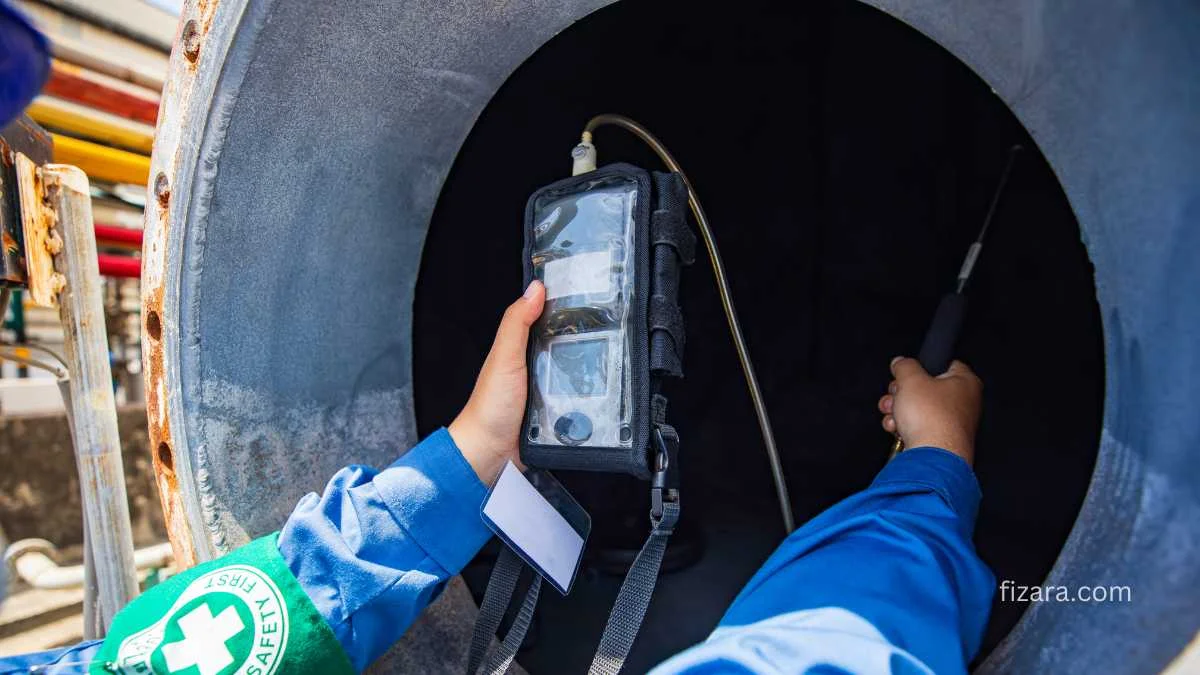Repairing gas lines is an essential task that requires stringent adherence to safety protocols to ensure the safety of workers and residents. Considering the potential hazards of the leaks, like fires, explosions, and carbon monoxide poisoning, it is crucial to enforce stringent safety measures during repair operations. Prioritizing safety is crucial to minimizing risks and ensuring a secure environment for everyone involved.
Assessment of the Situation
A comprehensive assessment of the situation is imperative before commencing any activities during gas line repair. This entails identifying the precise location and extent of the damage while also evaluating potential hazards in the vicinity. While the distinct odor of natural gas resembling rotten eggs can sometimes indicate leaks, using specialized equipment like gas detectors is essential for accurately pinpointing leak sources.
Proper Ventilation
Proper ventilation is crucial during the repair process to prevent the buildup of dangerous gases. Sufficient airflow helps to disperse any leaked gas, reducing the likelihood of ignition. Workers should actively promote adequate ventilation by opening windows and deploying fans to maintain air circulation within the work area. It is also essential to strictly enforce a no-smoking policy and abstain from using open flames near the site to mitigate the risk of fire or explosion hazards. These measures are imperative to ensure a safe working environment and minimize potential dangers associated with this repair process.
Personal Protective Equipment (PPE)
Adherence to wearing appropriate personal protective equipment (PPE) during repair work is indispensable for everyone involved. Safety goggles shield the eyes from debris and chemical splashes, gloves offer protection against corrosive substances, and respiratory gear filters out harmful gases. Wearing PPE at all times during repair work is essential to minimize the risk of injuries or exposure to hazardous materials.
Secure Work Environment
Maintaining a secure work environment is fundamental to averting accidents during the repair process. This entails securing the area surrounding the repair site to prevent unauthorized access by bystanders or vehicles. Additionally, deploying barricades or caution tape to restrict the work area alerts others to potential hazards. Employing proper tools and equipment based on industry best practices further ensures the safety of all involved parties.
Emergency Preparedness
Despite meticulous precautions, emergencies can still occur during the repair process. Therefore, having a comprehensive emergency response plan is essential for quickly and effectively addressing unexpected incidents. This plan should include detailed procedures for shutting down the gas supply in the case of leaks or explosions and ensuring access to firefighting equipment and first aid resources. Training workers in first aid and CPR is crucial, as it enables them to provide immediate assistance if injuries occur during the repair process. Regular drills and simulations can help workers stay prepared and confident in handling emergencies. Clear communication channels should also be established to coordinate responses and ensure timely interventions.
Safety must always be the top priority during gas line repair to mitigate risks and protect lives. Strict adherence to established safety protocols reduces the inherent dangers during the repair process. Workers can achieve successful outcomes by emphasizing safety at every stage of the repair process while safeguarding themselves and others. Comprehensive training and regular safety drills further enhance the ability to handle emergencies effectively. This method ensures efficient management of potential hazards, fostering a safe working environment for all parties involved.









